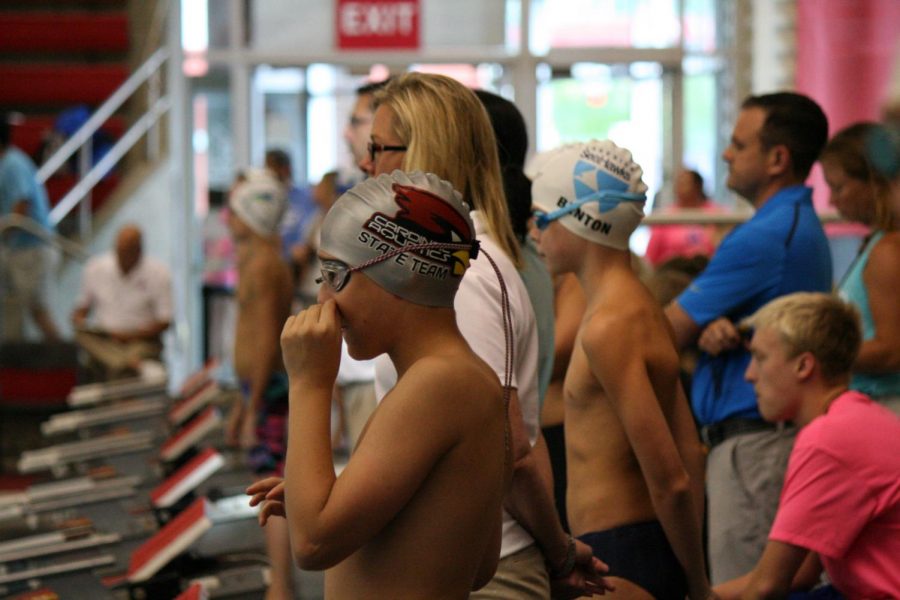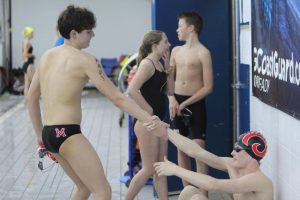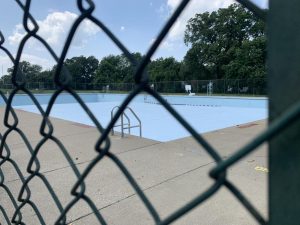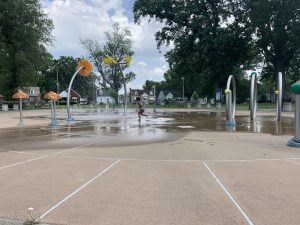Louisville’s pools: How club swimming impacts the sport as a whole
Louisville is a reputable swimming city, despite having few facilities for actual swimming.
October 9, 2019
It started with a quarry, converted to a 3.2 million gallon swimming pool hidden amongst towering 40 foot cliffs in 1924. Then, in 1928, Lakeside Swim Team was born.
Now, joined by two other club teams like it, these three USA Swimming members have made a name for Louisville, and the successful reputation continues.
In 2019, the Lakeside Seahawks were named a Gold Medal National Excellence Program for the 15th time, standing within the top 15 teams in the country. Triton Swimming and Cardinal Aquatics, the city’s two other teams, were among the Silver Medal Clubs.
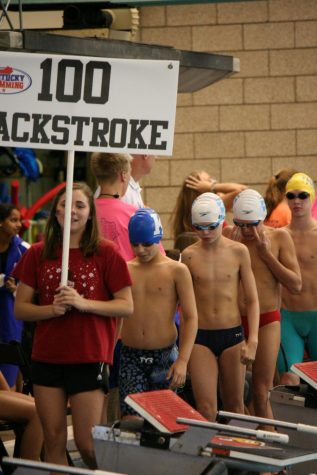
Ten Olympians have come out of Louisville, including world record holder Mary T. Meagher, also known as “Madame Butterfly”. She broke this world record when she was 14. Can you be a little more specific as to what record she broke?
In the approaching 2020 Olympic Trials, four swimmers from Lakeside have already qualified, including 16-year-old Annabel Crush, who competed in the Junior World Championships meet in Budapest, Hungary two months ago in August.
There is a pattern among swim clubs as well as college swimming, with Olympian Kelsi Dahlia residing from University of Louisville as well as National Champion freestyler Mallory Comerford. Dahlia holds the American Record in the 100 meter butterfly, and Comerford broke the 2017 US Open Record in the 100 meter freestyle.
There remains a constant standard of excellence in the powerful swimming city, according to Manual alumna Anna Hogan, who swam for Manual as well as Cardinal Aquatics.
“When a city is filled with teams that have something special like that, good swimmers will be produced, guaranteed,” Hogan said.
However, there is slight contradiction due to the lack of facilities in the area. Louisville breaks the pattern of its regional competitor cities like Nashville and Indianapolis, which are not scarce of swimming facilities. They are similar in economy and demographic.
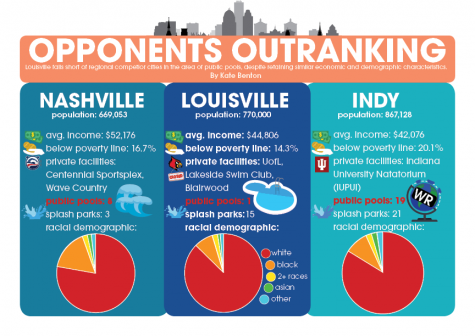
How can the city produce elite swimmers without physical pools to support it?
The answer: private pools such as Lakeside, the University of Louisville’s and Blairwood, where the three club teams train daily. Lakeside Head Coach Mike DeBoor identifies these pools as able to accomodate training, but not elite competitions. The frequent swimmers there do not experience the need for a place to swim.
“I wouldn’t really say that I was affected by the shortage of pool space,” Hogan said. “I practiced at U of L, which was right by Manual, so it was actually very convenient for me.”
“Over the last 20-30 years the facilities have fallen behind,” DeBoor said. “But I think the strength of programs have carried it through.”
While this is a positive in training for team members, club swimming comes with a price.
Club team memberships can range from $1000-2000 per season, not including the cost of equipment or cost of traveling to meets outside Kentucky. Racing suits typically cost up to $500 as well.
A hefty load like this narrows the playing field of the sport, eliminating lower income families who can’t afford to travel and purchase a $500 suit that can only be worn up to eight times total.
“The pool poor issue more likely limits the number of children exposed to swimming,” Deboor said. “I think the demographics also play a role that swimming in Louisville is mainly people that have the means to support it, as well the private school support the sport has,” Deboor said.
This connects to the reason that private schools such as Sacred Heart Academy and St. Xavier High School are such high achievers in swimming. Sacred Heart holds 30 State Championship titles, while St. X holds 31 titles in a row.
“Those who are at the elite end of swimming do not allow Louisville’s lack of pools to stop them from their goals,” Sacred Heart Assistant Coach Pam Haeberlin said. “If we had more pools, we may have more elite swimmers,” Haeberlin said.
In correlation, those who can pay for the sport of swimming can also pay for high school tuition, which is approximately $14,000-$15,000 a year for Sacred Heart and St. X.
Maddie Beckley (11, J+C) sees this disparity in swimming for Manual, where some team members join simply to learn to swim. This is the same for Lakeside, where the majority of the National training group attends private school.
“Schools with students with more money are gonna have more good swimmers than schools with lower income families, so this gives private schools an advantage, just because swimming is such an elitist sport,” Beckley said.
In retrospect, a new facility in Louisville seems more important now than ever. Club swimming makes it easy to have pool access, but at what cost?



